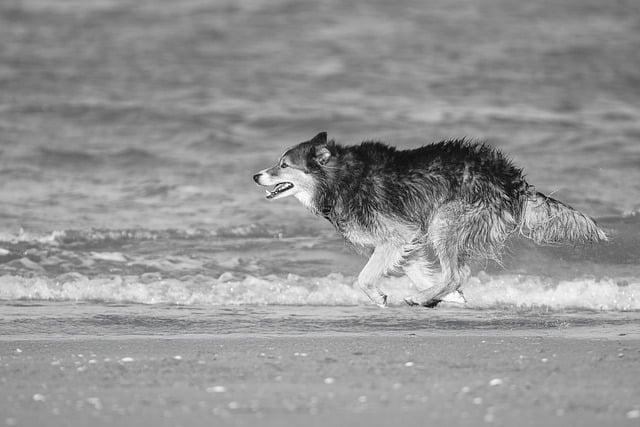When Max, a spirited Golden Retriever, began digging up the garden and barking at every passerby, his owner, Sarah, felt overwhelmed. She sought help from a professional trainer who assured her that with consistent effort, change was possible. Within weeks, Max learned new commands and behaviors, transforming into a well-mannered companion. The journey took time—about three months—but the bond they forged was priceless. Remember, correcting a dog’s behavior isn’t just about time; it’s about patience, consistency, and love. Invest in your pet’s future today!
Contents
- Understanding the Factors Influencing Dog Behavior Correction
- Establishing a Consistent Training Routine for Lasting Results
- Utilizing Positive Reinforcement Techniques for Effective Change
- Monitoring Progress and Adjusting Strategies for Optimal Outcomes
- Q&A
Understanding the Factors Influencing Dog Behavior Correction
When addressing the complexities of canine behavior, it’s essential to recognize that various factors play a pivotal role in shaping how quickly a dog can be corrected. **Understanding these elements can significantly enhance the effectiveness of your training efforts.** Here are some key aspects to consider:
- Age: Puppies are generally more adaptable and can learn new behaviors faster than older dogs. Their brains are still developing, making them more receptive to training.
- Previous Experiences: A dog’s past experiences, whether positive or negative, can influence its behavior. Dogs that have faced trauma may require more time and patience to correct unwanted behaviors.
- Consistency in Training: The consistency of commands and training methods used by all family members is crucial. Mixed signals can confuse a dog, prolonging the correction process.
- Motivation: Understanding what motivates your dog—be it treats, praise, or play—can significantly impact the speed of behavior correction. Tailoring your approach to align with your dog’s preferences can yield quicker results.
Another vital consideration is the **individual temperament** of the dog. Just like humans, dogs have unique personalities that can affect their learning curves. Some breeds are naturally more eager to please and may respond to training more quickly, while others may be more stubborn or independent. Recognizing your dog’s temperament can help you adjust your training techniques accordingly, ensuring a more effective approach.
Moreover, the **environment** in which training occurs can greatly influence outcomes. A calm, distraction-free space is ideal for initial training sessions, allowing your dog to focus and absorb commands. As your dog progresses, gradually introducing distractions can help reinforce learned behaviors in real-world scenarios. This gradual exposure can be crucial in solidifying corrections and ensuring long-term success.
Lastly, the **owner’s commitment** to the training process cannot be overstated. The time and effort you invest in understanding your dog’s needs, practicing regularly, and maintaining a positive attitude will directly correlate with the speed of behavior correction. Engaging in ongoing education about canine behavior and training techniques can empower you to make informed decisions, ultimately leading to a more harmonious relationship with your furry companion.
Establishing a Consistent Training Routine for Lasting Results
Establishing a consistent training routine is crucial for achieving lasting results in your dog’s behavior modification journey. Dogs thrive on structure and predictability, which helps them understand what is expected of them. By setting aside specific times each day for training sessions, you create a reliable framework that your dog can learn to anticipate and respond to positively. This consistency not only reinforces learning but also strengthens the bond between you and your pet.
To maximize the effectiveness of your training routine, consider incorporating a variety of techniques and activities. This can include:
- Positive Reinforcement: Rewarding good behavior with treats, praise, or playtime encourages your dog to repeat those behaviors.
- Short Sessions: Keep training sessions brief but frequent to maintain your dog’s attention and enthusiasm.
- Varied Environments: Practice in different locations to help your dog generalize their learning and adapt to various distractions.
- Socialization Opportunities: Expose your dog to new people, pets, and environments to build confidence and reduce anxiety.
Another key aspect of a successful training routine is patience. Behavioral changes take time, and it’s essential to remain committed to the process. Celebrate small victories along the way, as they contribute to your dog’s overall progress. If you encounter setbacks, view them as learning opportunities rather than failures. Consistency in your approach, combined with a positive mindset, will foster an environment where your dog can thrive.
Lastly, remember that every dog is unique, and the timeline for correcting behavior will vary. By establishing a consistent training routine, you not only set the stage for effective learning but also create a supportive atmosphere that encourages your dog to flourish. With dedication and perseverance, you will witness significant improvements in your dog’s behavior, leading to a happier and more harmonious relationship.
Utilizing Positive Reinforcement Techniques for Effective Change
When it comes to modifying a dog’s behavior, employing positive reinforcement techniques can significantly accelerate the process. This approach focuses on rewarding desirable behaviors rather than punishing undesirable ones, creating a more harmonious relationship between you and your pet. By consistently reinforcing good behavior, you not only encourage your dog to repeat those actions but also build their confidence and trust in you as their owner.
To effectively implement positive reinforcement, consider the following strategies:
- Immediate Rewards: Timing is crucial. Reward your dog immediately after they exhibit the desired behavior to help them make the connection between the action and the reward.
- Variety of Rewards: Use a mix of treats, praise, and playtime to keep your dog engaged and motivated. Different rewards can cater to your dog’s unique preferences.
- Consistency: Ensure that all family members are on the same page regarding commands and rewards. Consistency helps reinforce the learning process.
- Gradual Progression: Start with simple commands and gradually increase the complexity as your dog becomes more proficient. This builds their skills and keeps them challenged.
Another essential aspect of positive reinforcement is the ability to redirect unwanted behaviors. Instead of scolding your dog for misbehavior, redirect their attention to a more appropriate action and reward them for it. For example, if your dog is chewing on furniture, guide them to a chew toy and praise them when they engage with it. This not only helps correct the behavior but also teaches your dog what is acceptable.
Lastly, patience is key. Behavioral change is a gradual process, and each dog learns at their own pace. By maintaining a positive and encouraging environment, you can foster a sense of security that allows your dog to thrive. Remember, the goal is to create lasting change through understanding and compassion, making the journey enjoyable for both you and your furry companion.
Monitoring Progress and Adjusting Strategies for Optimal Outcomes
To effectively address behavioral issues in dogs, it is crucial to implement a systematic approach that includes regular monitoring of progress. This involves observing your dog’s reactions to various stimuli and noting any changes in behavior over time. Keeping a detailed journal can be beneficial, allowing you to track specific incidents, triggers, and improvements. By documenting these observations, you can identify patterns that may indicate whether your current strategies are effective or if adjustments are needed.
Adjusting your training methods based on your dog’s progress is essential for achieving optimal outcomes. If you notice that certain techniques are not yielding the desired results, consider the following strategies:
- Reassess Training Techniques: Evaluate the methods you are using and determine if they align with your dog’s learning style.
- Increase Consistency: Ensure that all family members are on the same page regarding commands and rewards to avoid confusing your dog.
- Introduce New Rewards: Sometimes, a change in motivation can reignite your dog’s interest in training. Experiment with different treats or toys.
- Seek Professional Guidance: If progress stalls, consulting a professional dog trainer or behaviorist can provide new insights and techniques.
Regularly assessing your dog’s behavior not only helps in fine-tuning your training approach but also fosters a stronger bond between you and your pet. As you monitor their progress, celebrate small victories, as these can be significant indicators of improvement. Positive reinforcement for desired behaviors encourages your dog to continue making strides in their training journey.
Ultimately, the timeline for correcting a dog’s behavior varies widely based on individual circumstances. Factors such as the dog’s age, breed, history, and the severity of the behavioral issue all play a role. By maintaining a flexible mindset and being willing to adapt your strategies, you can create an environment conducive to lasting change. Remember, patience and persistence are key components in this transformative process.
Q&A
-
How long does it typically take to correct a dog’s behavior?
The time it takes to correct a dog’s behavior can vary widely, but on average, you can expect to see noticeable improvements within 4 to 6 weeks of consistent training. Some behaviors may take longer, depending on the severity and the dog’s individual temperament.
-
What factors influence the duration of behavior correction?
Several factors can impact the time required for behavior correction, including:
- Age: Puppies often learn faster than older dogs.
- Consistency: Regular training sessions yield quicker results.
- Type of behavior: Some behaviors are more ingrained and may take longer to modify.
- Owner’s experience: Experienced trainers can often expedite the process.
-
Can I speed up the behavior correction process?
Yes, you can accelerate the process by:
- Establishing a routine: Consistent training schedules help reinforce learning.
- Using positive reinforcement: Rewarding good behavior encourages quicker learning.
- Seeking professional help: A certified trainer can provide tailored strategies to address specific issues.
-
What should I do if progress seems slow?
If you feel progress is stagnating, consider the following:
- Reassess your training methods: Ensure you are using effective techniques.
- Be patient: Behavior change takes time; celebrate small victories.
- Consult a professional: A trainer can offer insights and adjustments to your approach.
while the timeline for correcting a dog’s behavior varies, patience and consistency are key. Invest the time and effort, and you’ll not only see improvements but also strengthen the bond with your furry companion. Start today for a happier tomorrow!

大家好,我是彼得潘,專業的手法身體治療師。我喜歡探索和研究各種主題,並透過與人工智慧的合作分享專業、實用、有趣的文章。我們定期進行人工審核,以確保內容的準確性。如果您發現文章中有任何不準確的地方,請隨時與我們聯繫,我們會及時糾正。您可以透過 [email protected] 與我們聯繫。



